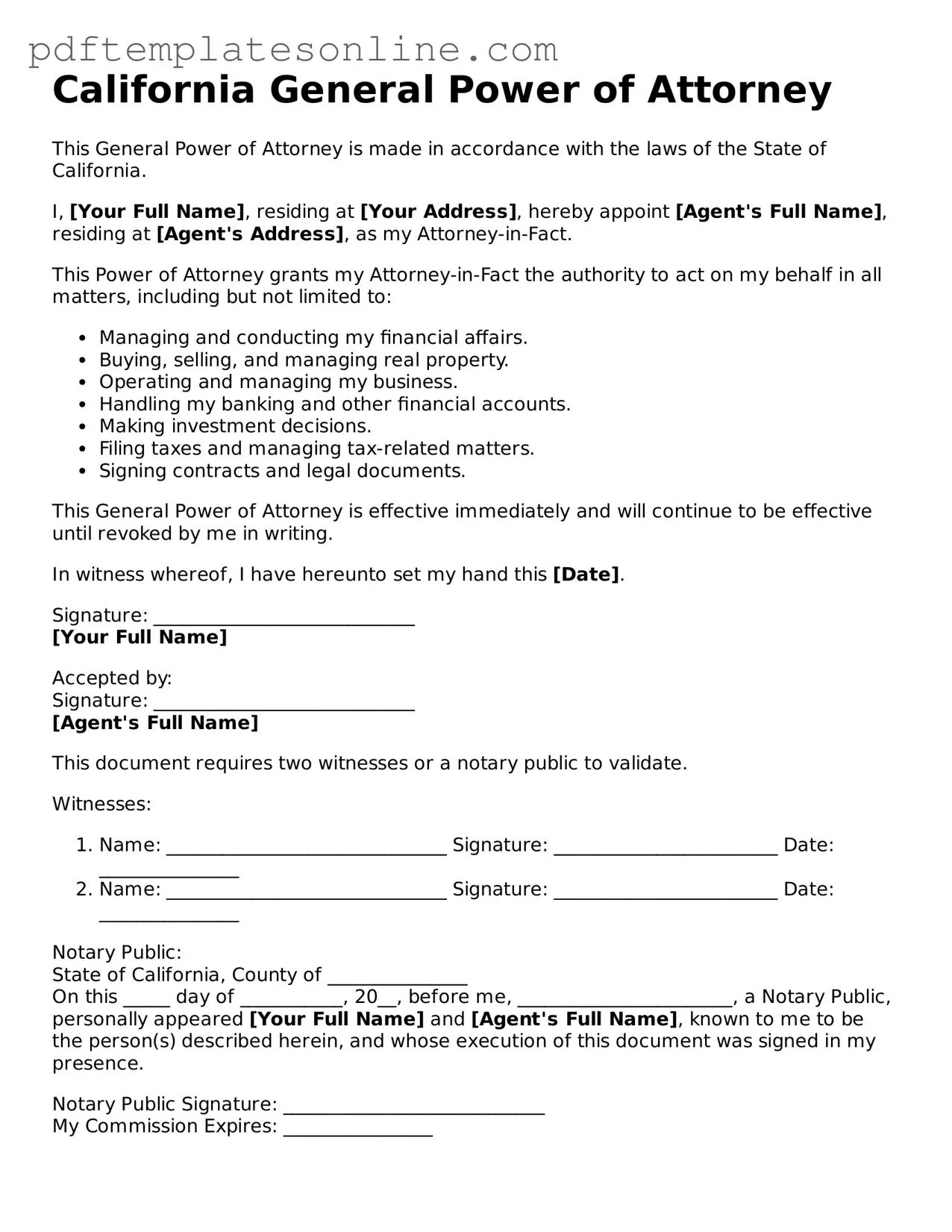Filling out the California General Power of Attorney form can be straightforward, but many people make common mistakes that can lead to complications. One frequent error is failing to clearly identify the principal and the agent. The principal is the person granting the authority, while the agent is the one receiving it. Ensure that both names are complete and correctly spelled to avoid any confusion.
Another mistake involves not specifying the powers being granted. The form provides options for general or specific powers. If the powers are not clearly outlined, the agent may not have the authority to act as intended. It’s important to check the boxes that apply and provide details when necessary.
People often overlook the need for signatures. Both the principal and the agent must sign the document. Some individuals forget to sign, which invalidates the power of attorney. Additionally, if the principal is unable to sign due to health issues, a witness or notary may be required to validate the form.
Not dating the form is another common oversight. A date indicates when the power of attorney becomes effective. Without a date, there may be confusion about when the authority was granted, potentially leading to disputes.
Many individuals also neglect to consider the implications of the powers they are granting. It’s crucial to understand the responsibilities and potential risks involved. Granting too broad of authority can lead to misuse, so it’s wise to limit powers to what is necessary.
In some cases, people fail to provide a backup agent. If the primary agent is unable or unwilling to act, having an alternative ensures that the principal's affairs can still be managed. This step is often overlooked but is essential for continuity.
Another mistake is not reviewing the form after completion. Errors can easily slip through, such as incorrect information or unchecked boxes. Taking the time to review the document can prevent future problems.
Lastly, individuals sometimes ignore state-specific requirements. California has specific laws regarding power of attorney forms. It’s important to ensure that the document complies with these laws to avoid any legal issues down the line.
